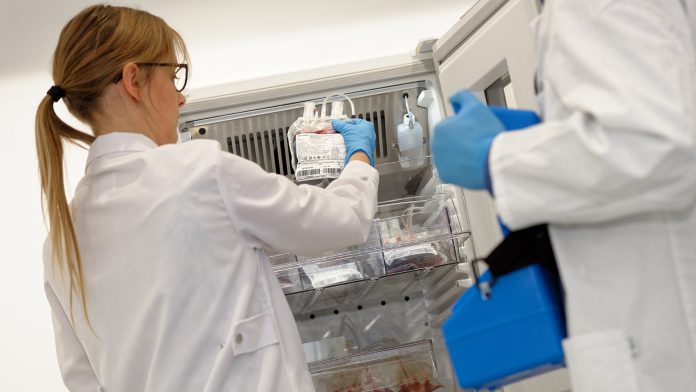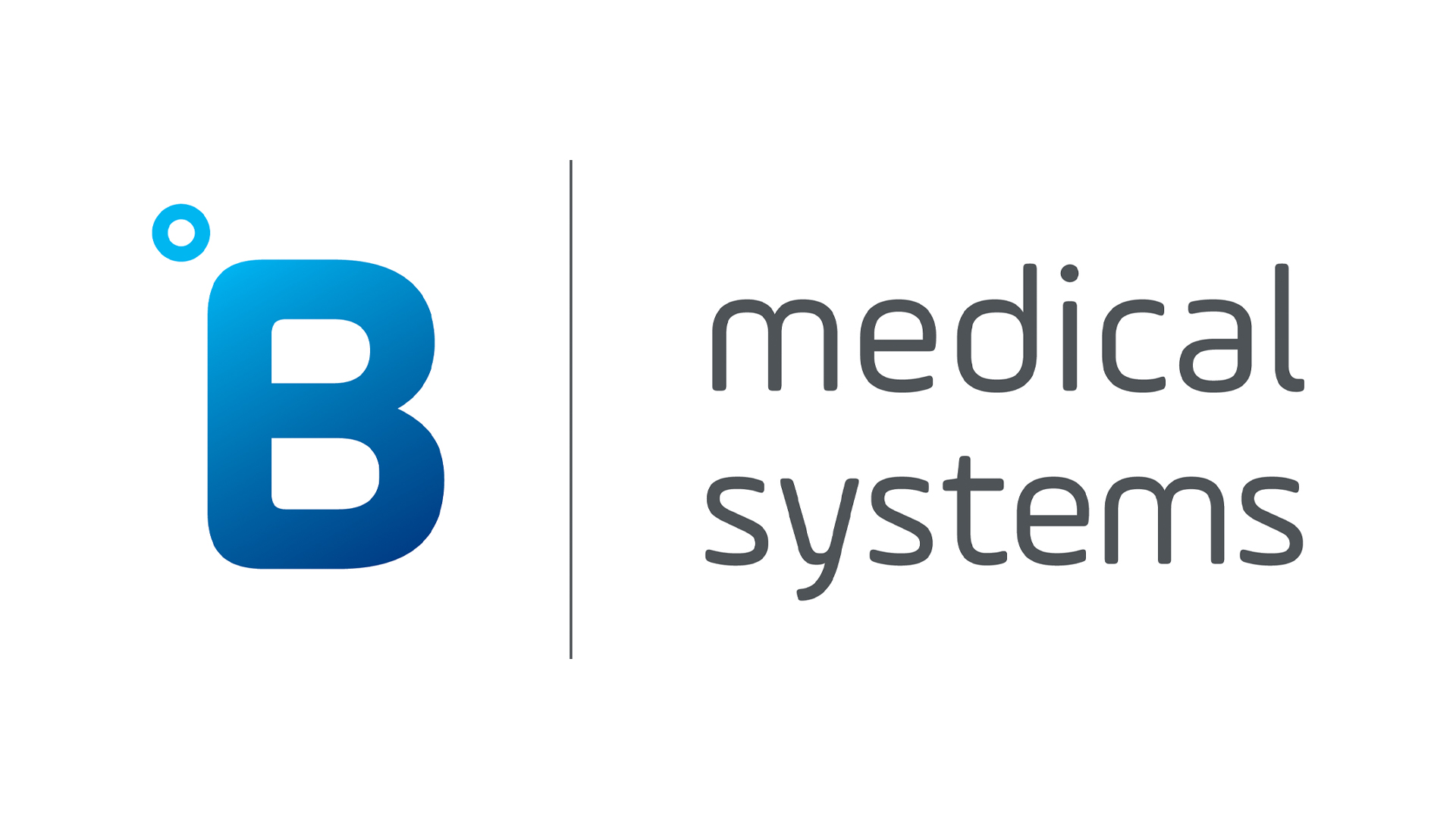
The transportation and storage of biospecimens and pharmaceuticals have become increasingly important in the healthcare industry.
These sensitive materials, ranging from tissue samples to life-saving drugs to vaccines, play a critical role in medical treatments, scientific research, drug development and public health. Their integrity and viability are crucial, and even minor deviations in their storage conditions can compromise their effectiveness.
The journey of these materials, often across continents, is fraught with challenges. Fluctuating temperatures, exposure to light, potential contamination, and logistical hurdles can adversely affect the quality of biologicals. Proper safeguarding, therefore, is not just a logistical concern but a matter of patient safety and scientific accuracy.
For decision-makers, the task is complex. They must navigate a maze of regulatory requirements, ensure the use of advanced technological solutions for real-time monitoring, and collaborate with specialised logistics partners that have experience in handling these delicate materials. Moreover, understanding the unique storage and transport requirements of each biospecimen or pharmaceutical product is essential.
In essence, as we advance in medical science and as treatments become more personalised and sophisticated, the issue of the safe and reliable transportation of biospecimens and pharmaceuticals will only become more important.
1. Importance of safeguarding biospecimens and pharmaceuticals
Scientific and health implications:
Biospecimens, such as tissue samples, blood, and biofluids, are critical to obtaining genetic and cellular information. They serve as windows into the intricate workings of the human body, revealing patterns, susceptibilities, and anomalies. Proper preservation of these specimens is not just necessary but pivotal to ensure the accuracy of research outcomes. For example, a well-preserved tissue sample can be the difference between identifying a genetic marker for a disease and missing it entirely.
Similarly, pharmaceuticals are created to interact with the human body in exact ways. Each pill, injection, or syrup was designed to affect the body in a precise sequence of chemical reactions or pathways, and its release on the market is a culmination of years of research and testing. The integrity of these pharmaceuticals is critical to guarantee their efficacy and safety, and they therefore often require strict storage and transport conditions. A compromised drug might not only be ineffective but could also pose significant health risks, as if the chemicals within it change, the pharmaceutical may affect the patient’s body in unexpected ways.
The consequences of negligence:
The repercussions of improper safeguarding are manifold and far-reaching. Pharmaceuticals can lose their potency when degraded, rendering treatments ineffective and, in some cases, even harmful. This not only jeopardises patient health but can also lead to significant financial losses as entire batches of medical products are found to have become unusable.
Similarly, the degradation of biospecimens can skew research results. Imagine the ramifications of drug trials based on compromised tissue samples. The results would be unreliable at best and potentially dangerous at worst. Such inaccuracies can seriously delay scientific advancements, pushing back the discovery of vital treatments or cures.
Furthermore, the reputation of healthcare and research institutions is on the line. Distributing ineffective drugs or publishing skewed research findings can erode public and academic trust, a commodity that is challenging to regain once lost.
Thermodynamics and molecular integrity:
At the molecular level, temperature is a critical factor in maintaining structural stability. Molecules and atoms are always in motion, and their movement becomes faster and more violent as temperatures increase. This increased activity can lead to unwanted chemical reactions, compromising the integrity of the substance. For instance, the COVID-19 mRNA vaccine, with its lipid (fat) layer, showcased the fragility of certain compounds. The vaccine’s storage at a staggering -80°C was indeed a necessary decision to preserve its molecular integrity.
2. Ensuring temperature control in last mile deliveries:
The last mile of delivery is often the most critical and challenging phase in the transportation of temperature-sensitive goods, especially in the realm of medical supplies and pharmaceuticals. Ensuring that these products reach their destination in optimal condition requires a combination of cutting-edge technology and meticulous logistics planning.
Technological solutions:
The advent of technology has brought forth many tools that can significantly enhance the reliability of last-mile deliveries. One of the primary solutions is the use of insulated medical transport boxes. These are not your average storage boxes, as they come equipped with phase change materials (PCMs), which are substances that absorb or release heat during their phase transitions, ensuring that the contents of a box remain at a consistent temperature, irrespective of external conditions.
Another breakthrough is the integration of IoT-enabled sensors within the packaging. These sensors, connected to the vast realm of the Internet of Things, provide real-time temperature data. This means that any deviation from the desired temperature range can be instantly detected and rectified. Some of these sensors even come with geo-fencing features, sending alerts if the delivery vehicle strays from its designated route or takes prolonged stops, both of which could jeopardise the temperature stability of the contents.
For vehicles dedicated to such deliveries, retrofitting them with temperature control systems can offer an added layer of assurance. These systems ensure that the vehicle’s interior remains within the desired temperature range, providing a climate-controlled environment throughout the journey. And for those who value the tracking of the storage conditions of their biologicals, data loggers are indispensable. While they might not necessarily offer real-time feedback, they provide a comprehensive temperature record throughout the delivery, proving invaluable for post-delivery quality checks.
Logistics and training:
While technological innovations are available, it is the people who implement them that are truly able to make a difference. Using experienced delivery services and couriers that have a track record of maintaining temperature integrity can make a significant difference. These services can employ vehicles, equipment, and protocols designed specifically for transporting temperature-sensitive biologicals, drastically decreasing the chances of these products degrading.
However, even the best equipment is only as good as the person operating it. Comprehensive training for delivery personnel is crucial. This training should not just focus on the technical aspects but also instil an understanding of the significance of their cargo. A well-trained delivery person will know how to respond to unforeseen challenges, ensuring the cargo’s safety.
Furthermore, innovations in packaging, such as smart packaging solutions combined with temperature-regulating materials, can act as the first line of defence against temperature fluctuations. The integration of wireless temperature sensors within these packages offers continuous feedback, ensuring that any deviations are promptly addressed.
In essence, as the demand for temperature-sensitive deliveries grows, a synergy of technology, logistics, and training will be pivotal to ensure that every package, no matter how sensitive, reaches its destination in perfect condition.
3. The art of preparing for transportation of sensitive goods:
The transportation of sensitive goods, especially in the medical and research sectors, is a task that demands precision, foresight, and meticulous planning. Whether it’s a life-saving drug, a critical biospecimen, or a temperature-sensitive vaccine, the journey from the source to the destination is fraught with challenges. However, with the right preparation, these challenges can be effectively mitigated.
Understanding the requirements of biological products:
Every product has its own set of requirements, especially when it comes to storage and handling. For instance, some pharmaceuticals might need to be stored at sub-zero temperatures, while certain biospecimens might require a stable, room-temperature environment. It’s imperative to identify these specific requirements well in advance. This not only ensures the product’s integrity but also helps in selecting the right transportation mode and equipment.
Labelling is another critical aspect, as a well-labelled product provides handlers with essential information, ensuring that they take the necessary precautions. This is especially vital for international shipments, where language barriers might come into play. Moreover, sealing is also critical: ensuring that products are sealed correctly can prevent contamination, spillage, and degradation.
The choice of packaging can often make the difference between a successful delivery and a compromised product. As mentioned before, specialised packaging, such as temperature-controlled boxes equipped with PCMs, can maintain the desired temperature levels and ensure that the product remains in optimal conditions throughout its journey.
Planning and collaboration:
Transportation is not just about moving a product from one point to another. It is a complex process that involves multiple touchpoints, each with its own set of challenges. Pre-planning transportation routes can help in minimising transit times, ensuring that the product spends the least amount of time blocked somewhere. This is especially crucial for products with a limited shelf life.
However, even the best-laid plans can go awry without the right partners. Collaborating with experienced logistic partners who specialise in transporting sensitive goods can offer an added layer of assurance. These partners come with the expertise, equipment, and protocols designed specifically for such tasks.
In conclusion, the transportation of sensitive goods is a task that demands a blend of understanding, planning, and collaboration. With these in place, one can ensure that every shipment, no matter how sensitive, reaches its destination in perfect condition.
4. Considerations for decision makers:
In the intricate world of product transportation, especially when dealing with sensitive or perishable items, understanding the nature of the product is the cornerstone of ensuring its safe and effective delivery. From life-saving drugs to delicate biospecimens, the journey from the source to the “last mile” is a delicate ballet of precision, compliance, and customisation.
Understanding the nature of the product:
Every pharmaceutical product, whether it’s a drug, a biological sample, or a vaccine, has its own unique set of requirements. The first step in ensuring its safe transportation is to assess its specific temperature and environmental needs. For instance, while some vaccines might require ultra-cold storage, certain biological samples might be stable at room temperature.
The duration and distance of transportation play a pivotal role in determining transport logistics: a short-distance delivery within a city might not pose the same challenges as an international shipment that takes days. This is indeed where factors such as potential exposure to varying climatic conditions, the risk of transit delays, and the availability of facilities at transit points all come into play.
The choice of packaging and the transport medium is often the make-or-break factor. While vacuum-sealed packs might be ideal for certain products, others might require temperature-controlled containers with specialised cooling systems. The transport medium, whether it’s air, sea, or road, also has its own set of challenges and advantages.
Regulatory compliance:
In the world of product transportation, especially when dealing with medical and biological materials, regulatory compliance is not just a formality—it’s a necessity. Health organisations, both national and international, have set stringent standards and regulations to ensure the safety and efficacy of products in transit.
For international shipments, the maze of regulatory documentation can be daunting. From import permits to health certifications, ensuring that every document is in place is crucial to prevent delays, confiscations, or legal complications.
Tailored solutions:
While there are certain universal principles in product transportation, a one-size-fits-all approach is often not the best strategy. The nuances of each product, from its chemical composition to its intended use, necessitate tailored solutions. For instance, the transportation logistics for a temperature-sensitive vaccine would be different from that of a stable drug tablet.
Future outlook
The intricate process of transporting and storing biospecimens and pharmaceuticals underscores the delicate balance between science, logistics, and regulatory compliance. As the world becomes increasingly interconnected, the demand for safe and efficient transportation of these vital materials will continue to grow. The stakes are high, with patient safety, scientific accuracy, and institutional reputation on the line.
It’s evident that a holistic approach, encompassing a deep understanding of product nature, adherence to international regulations, and the implementation of tailored solutions, is imperative. Decision-makers, logistic partners, and healthcare professionals must work in unison, leveraging technology and expertise to ensure that every shipment, regardless of its sensitivity, reaches its destination in optimal condition.
As we look to the future, the lessons and strategies outlined in this document will aim to ensure that the global healthcare and research community can continue to rely on the safe and effective transportation of its most precious assets.
References
- AMA Journal of Ethics. (2016). Federal Privacy Protections: Ethical Foundations, Sources of Confusion in Clinical Medicine, and Controversies in Biomedical Research. 18(3):288-298. Available at: https://journalofethics.ama-assn.org/article/federal-privacy-protections-ethical-foundations-sources-confusion-clinical-medicine-and/2016-03.
- Beskow LM. (2016) Lessons from HeLa Cells: The Ethics and Policy of Biospecimens. Annu Rev Genomics Hum Genet. 2016 Aug 31;17:395-417. Available at: https://www.ncbi.nlm.nih.gov/pmc/articles/PMC5072843/.
- Mascalzoni, D., Dove, E., Rubinstein, Y. et al. International Charter of principles for sharing bio-specimens and data. Eur J Hum Genet 23, 721–728 (2015). Available at: https://www.nature.com/articles/ejhg2014197.
- National Cancer Institute. (2019). Biospecimen Collection, Processing, Storage, Retrieval, and Dissemination. BBRB. Available at: https://biospecimens.cancer.gov/bestpractices/to/bcpsrd.asp.
- National Human Genome Research Institute. (2019). Why is informed consent required? Available at: https://www.genome.gov/about-genomics/educational-resources/fact-sheets/why-is-informed-consent-required.
- National Research Council. (2010). Collecting, Storing, Using, and Distributing Biospecimens – Conducting Biosocial Surveys. Available at: https://www.ncbi.nlm.nih.gov/books/NBK50729/.
- Office for Human Research Protections. (2018). Coded Private Information or Biospecimens Used in Research, Guidance. HHS.gov. Available at: https://www.hhs.gov/ohrp/coded-private-information-or-biospecimens-used-research.html.
- World Health Organization (2011). Annex 9 Model guidance for the storage and transport of time- and temperature–sensitive pharmaceutical products. Available at: https://www.who.int/docs/default-source/medicines/norms-and-standards/guidelines/distribution/trs961-annex9-modelguidanceforstoragetransport.pdf?sfvrsn=b80e925f_2

























